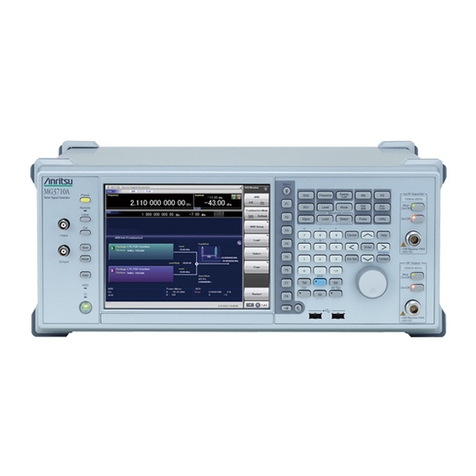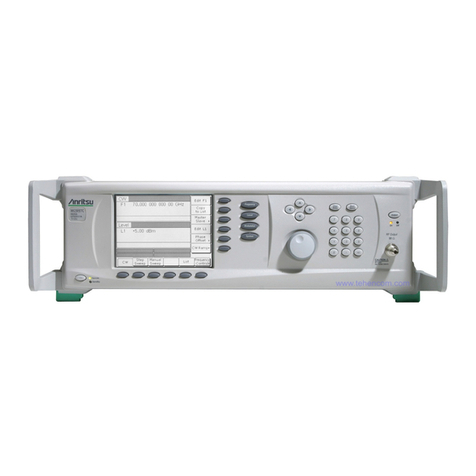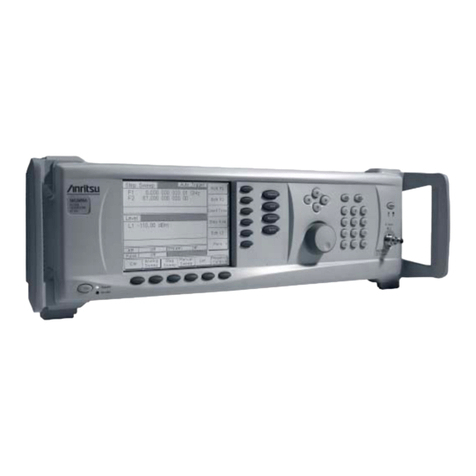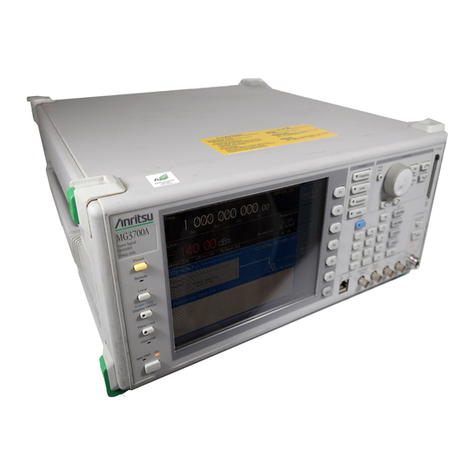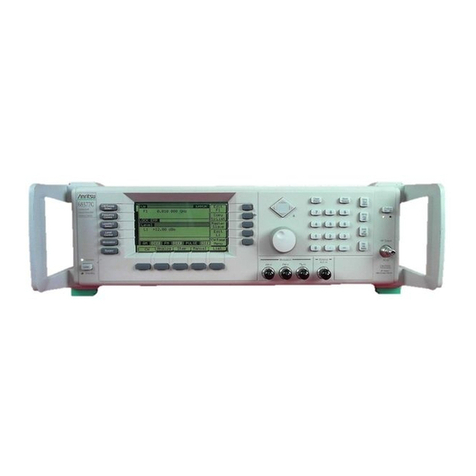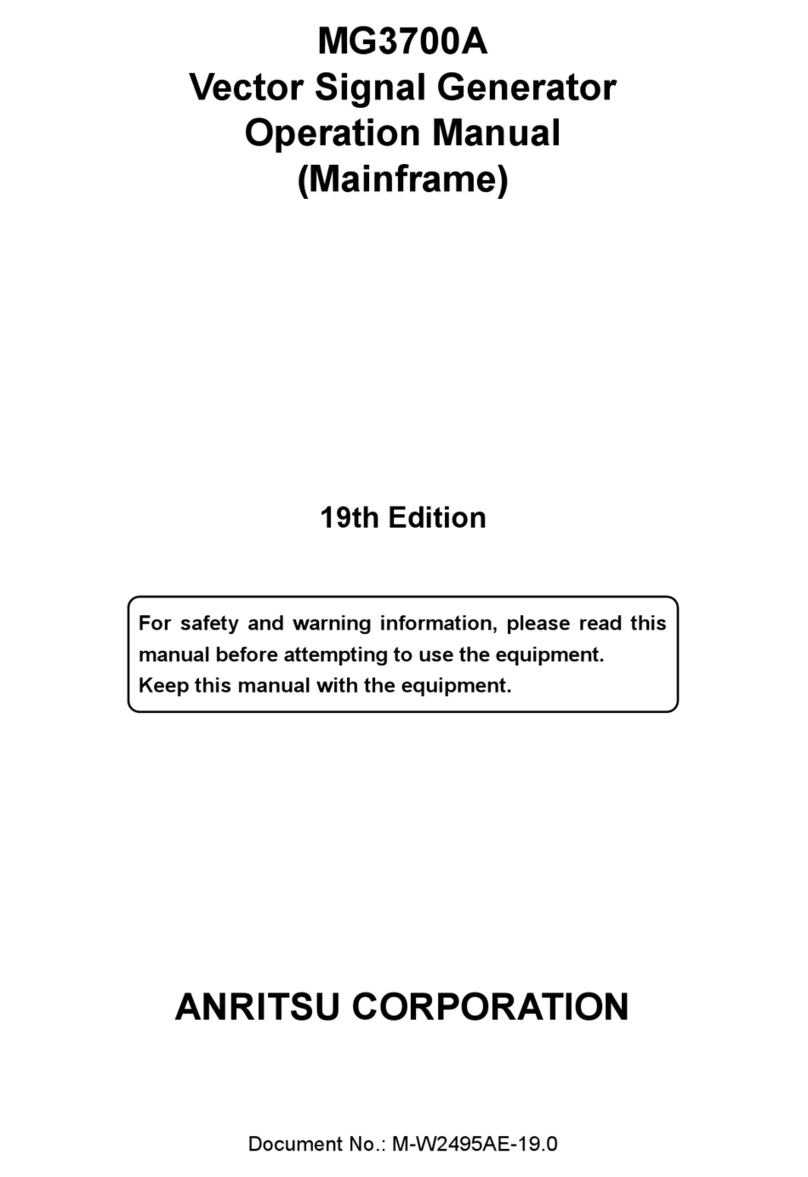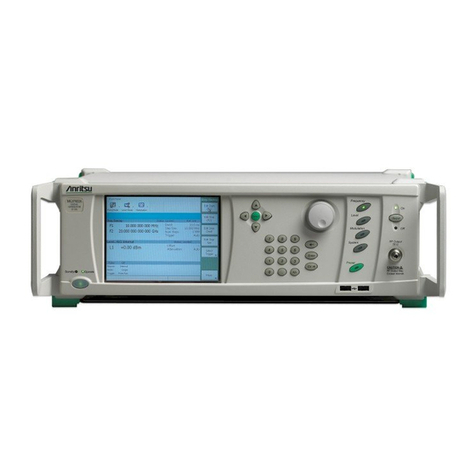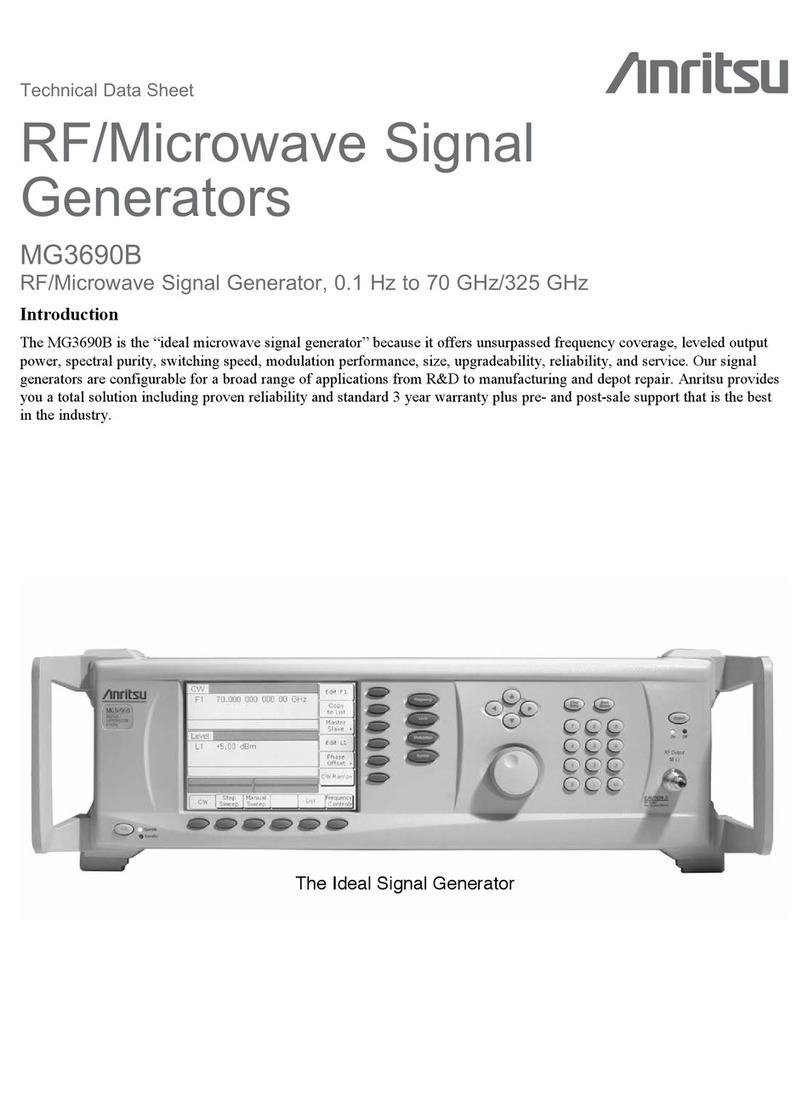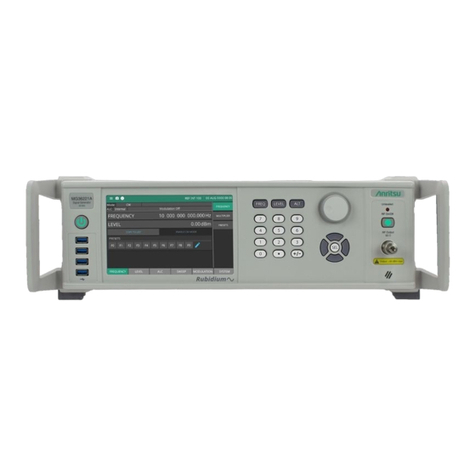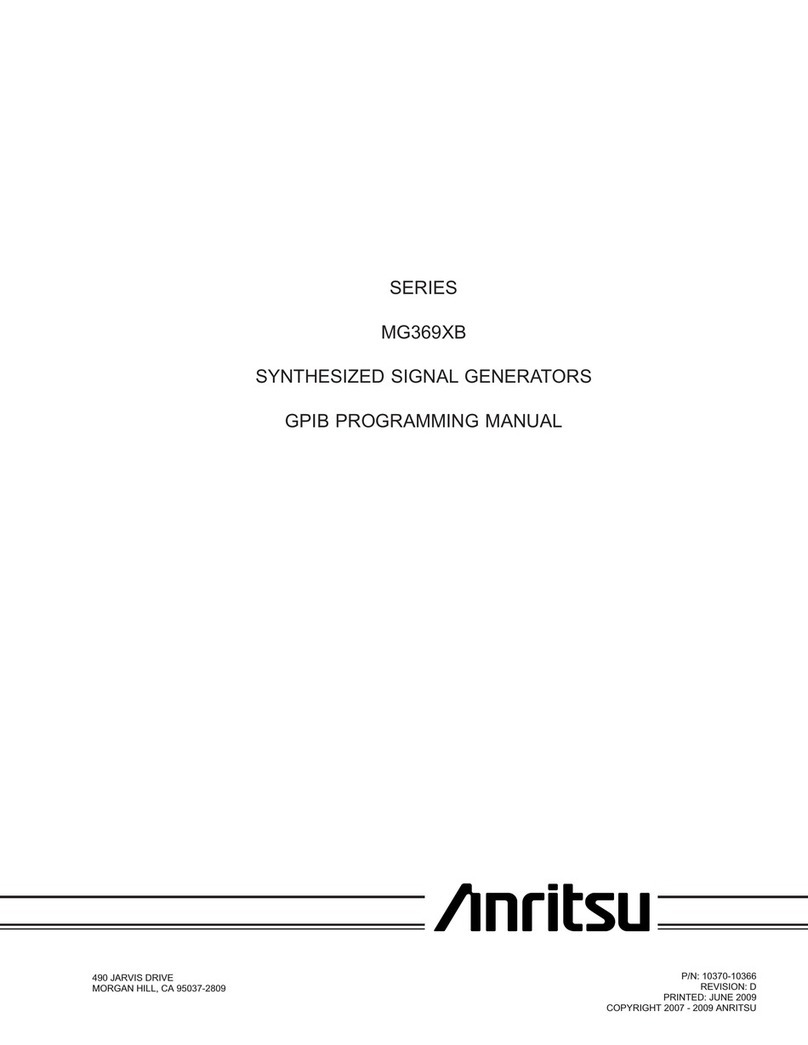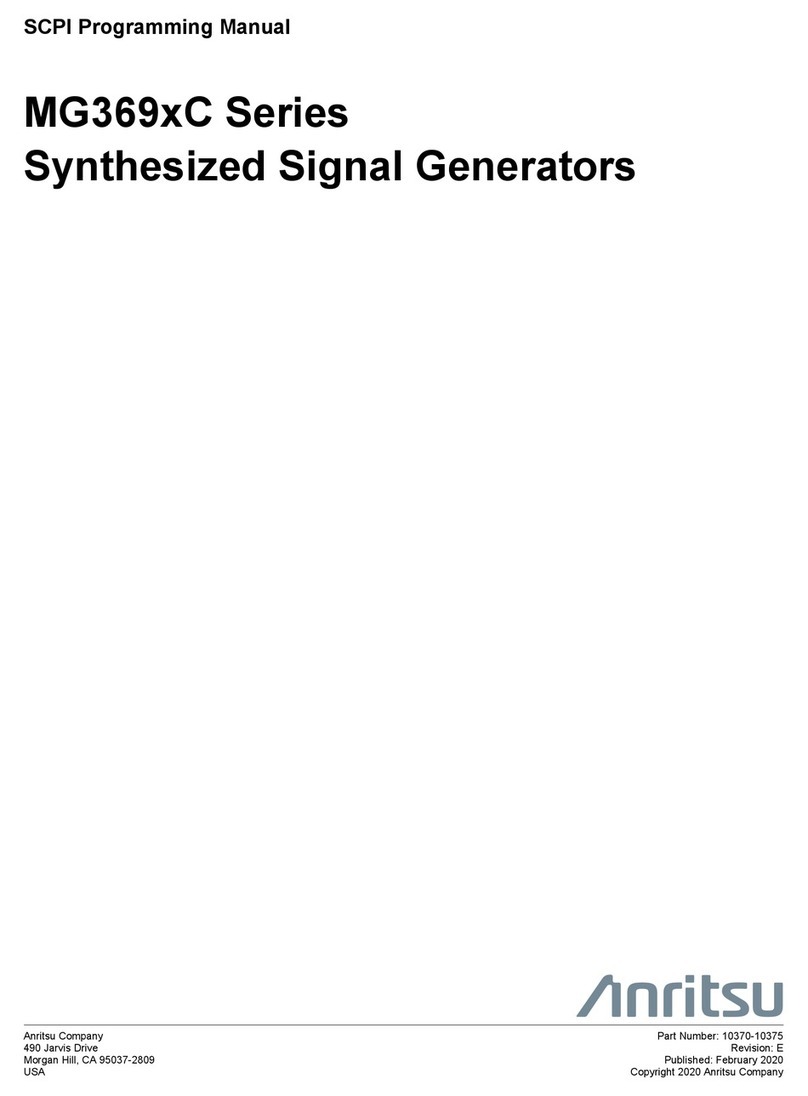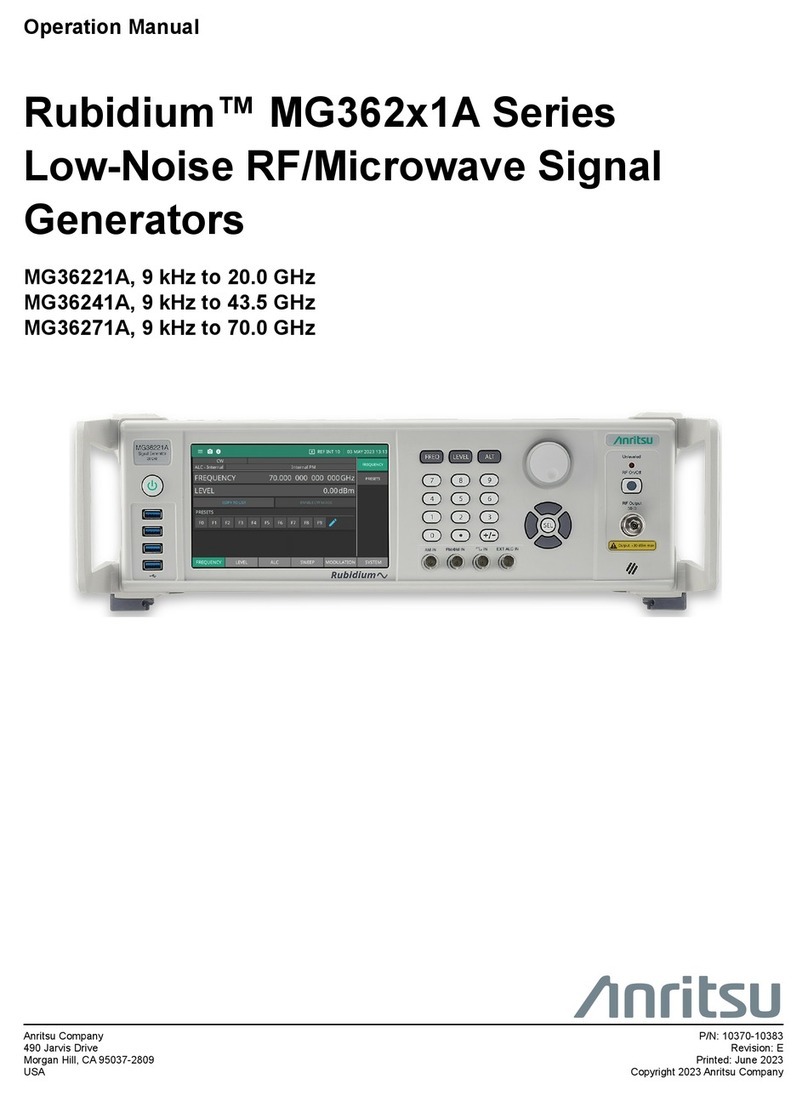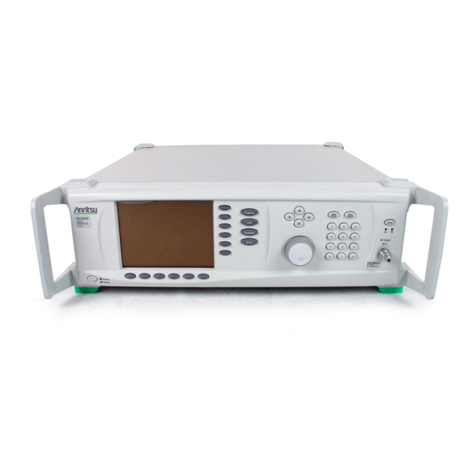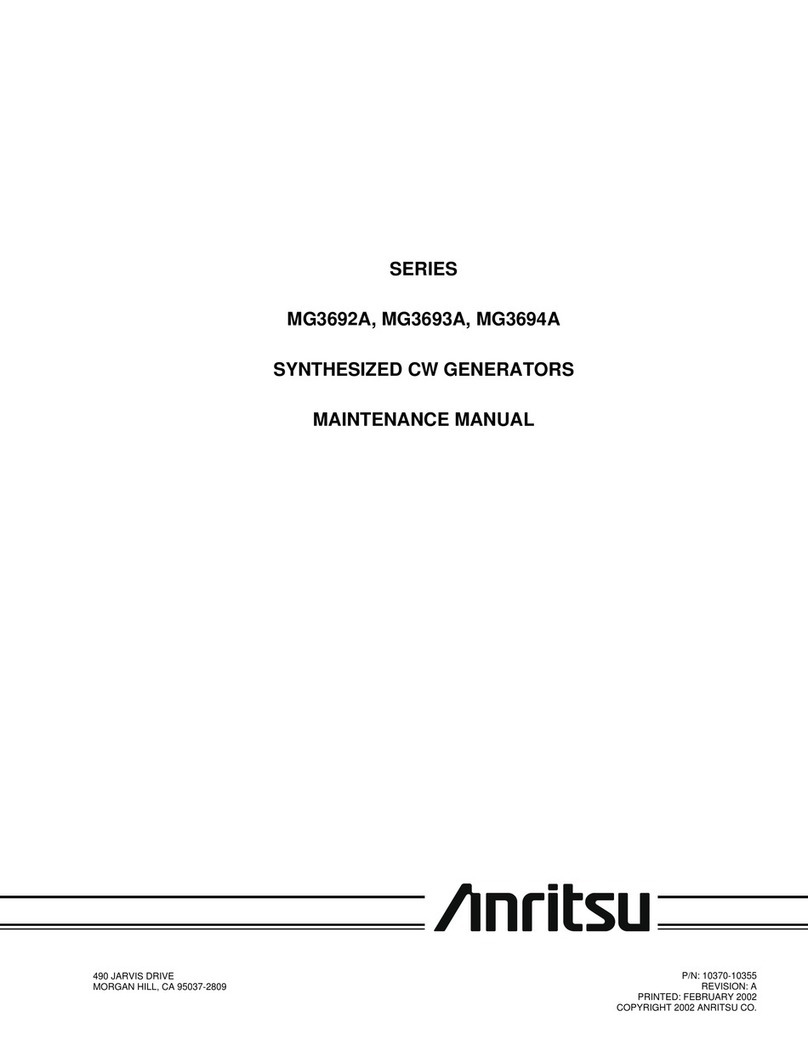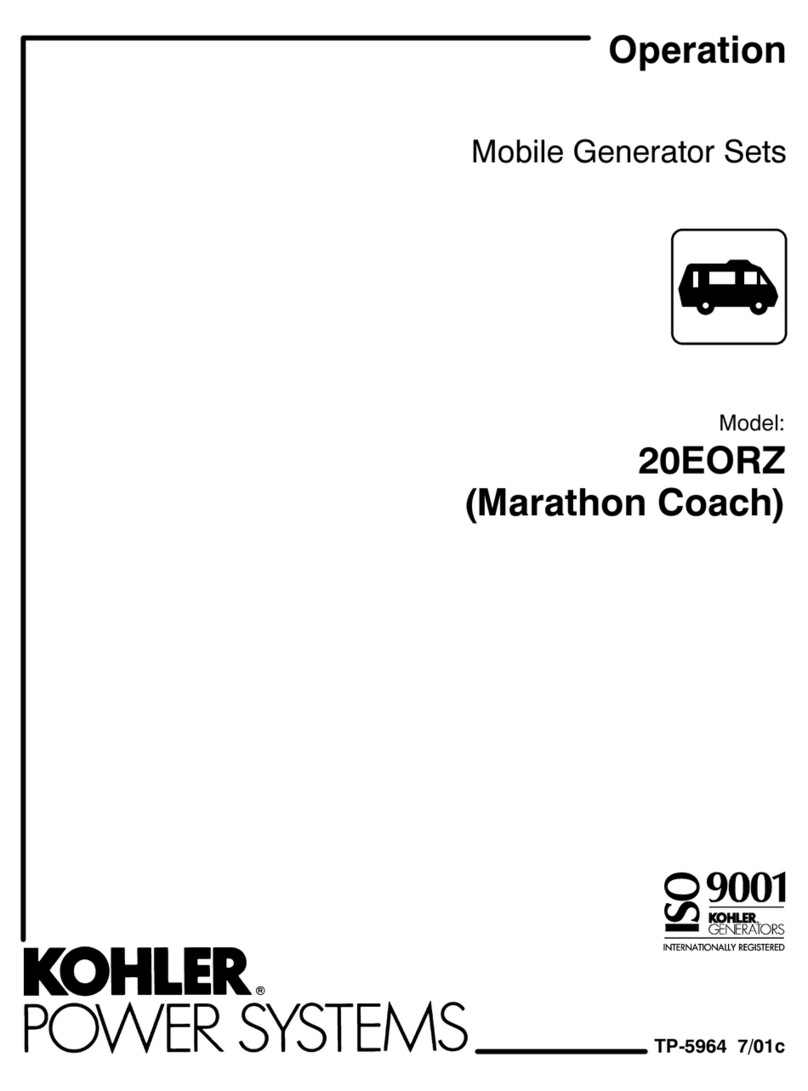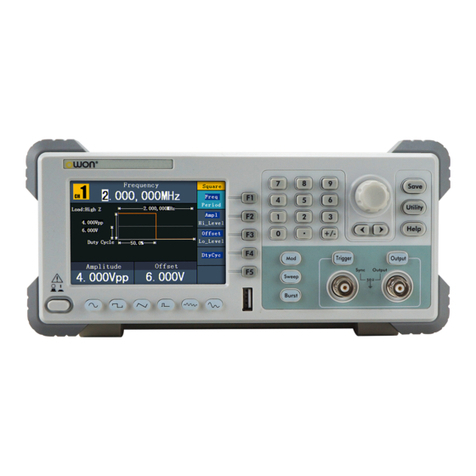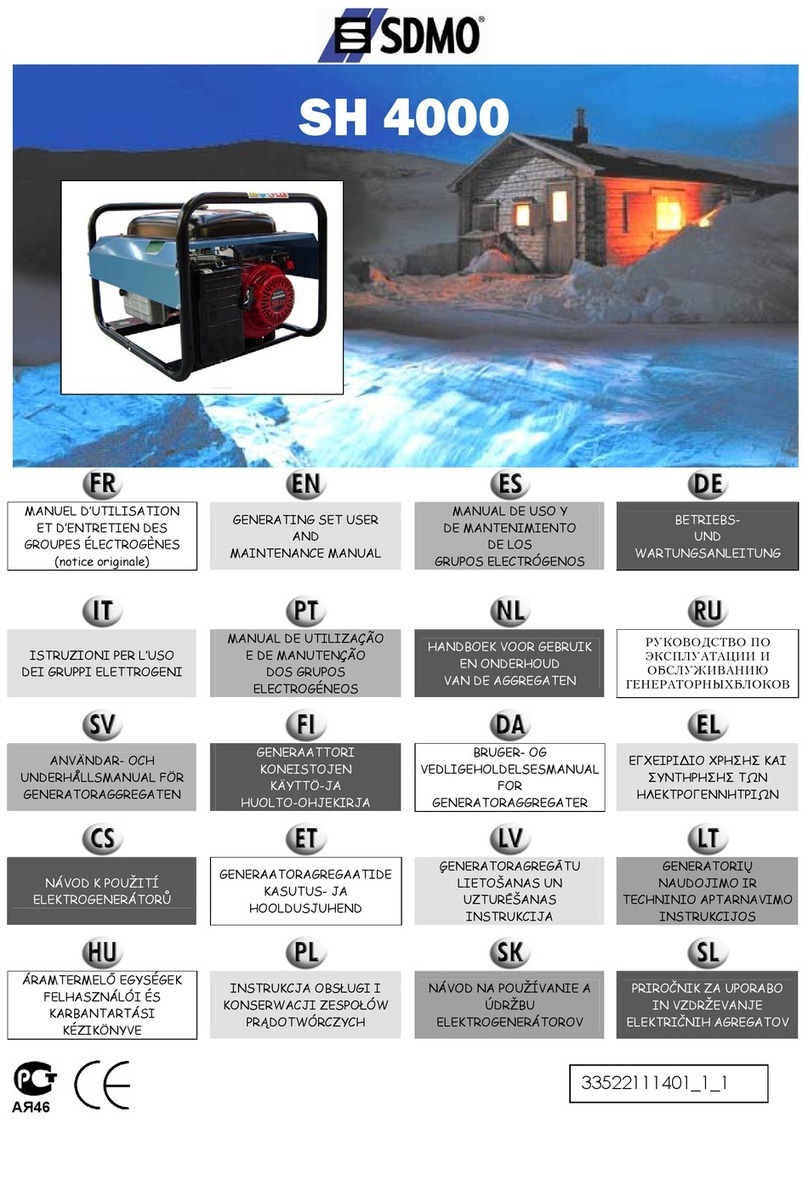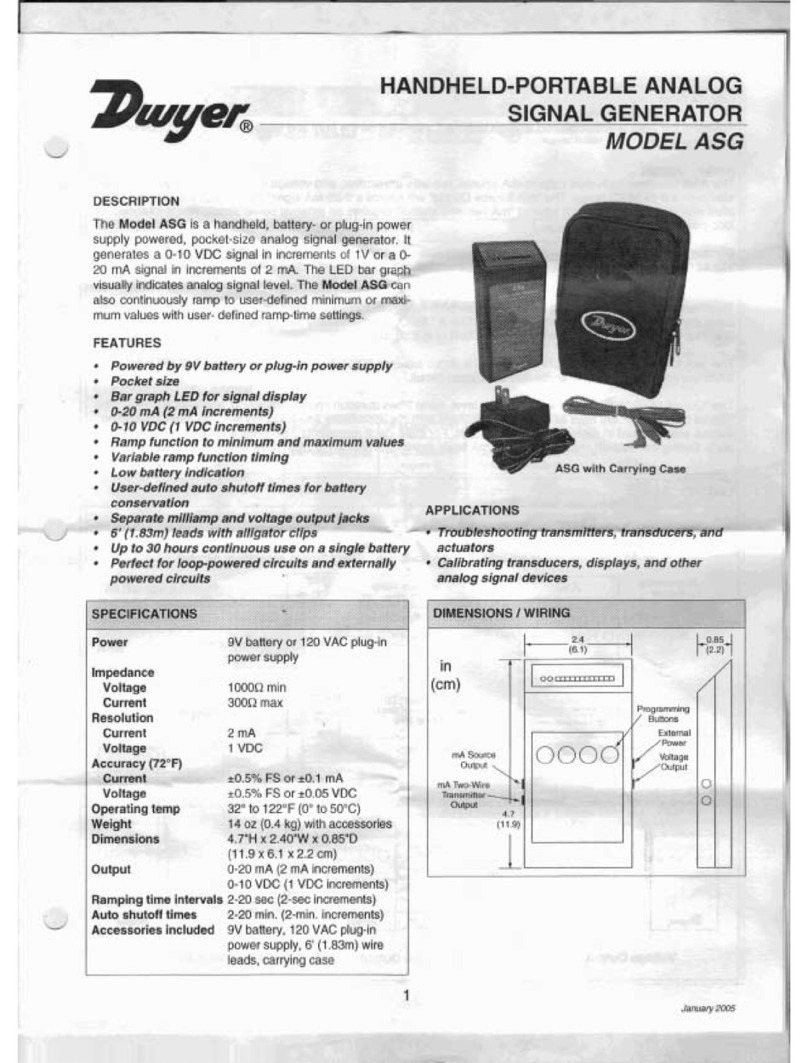
Contents-6 PN: 10370-10386 Rev. C MG362x1A MM
Table of Contents (Continued)
5-8 SG Messages . . . . . . . . . . . . . . . . . . . . . . . . . . . . . . . . . . . . . . . . . . . . . . . . . . . . . . . . . . . . . 5-15
MOD Supply Voltage Errors . . . . . . . . . . . . . . . . . . . . . . . . . . . . . . . . . . . . . . . . . . . . . . . 5-15
ALC Temperature Error. . . . . . . . . . . . . . . . . . . . . . . . . . . . . . . . . . . . . . . . . . . . . . . . . . . 5-15
YIG Temperature Error . . . . . . . . . . . . . . . . . . . . . . . . . . . . . . . . . . . . . . . . . . . . . . . . . . . 5-16
SWF Errors (Switched Filter Errors) . . . . . . . . . . . . . . . . . . . . . . . . . . . . . . . . . . . . . . . . . 5-16
REG Errors (Regulator Errors) . . . . . . . . . . . . . . . . . . . . . . . . . . . . . . . . . . . . . . . . . . . . . 5-16
The OCXO module is Not Phase-locked to the External 10 MHz Reference. . . . . . . . . . . 5-16
The Hi-Performance Reference Not Phase-Locked to the External 100 MHz Reference. 5-17
The MG362x1A Displays Lock Error. . . . . . . . . . . . . . . . . . . . . . . . . . . . . . . . . . . . . . . . . 5-17
ALC Error. . . . . . . . . . . . . . . . . . . . . . . . . . . . . . . . . . . . . . . . . . . . . . . . . . . . . . . . . . . . . . 5-18
Output Power Level Related Problems in the DDC (9 kHz to 2.2 GHz). . . . . . . . . . . . 5-18
Output Power Level Related Problem Above 20 GHz . . . . . . . . . . . . . . . . . . . . . . . . . 5-19
AM Meter or Associated Circuitry Failed . . . . . . . . . . . . . . . . . . . . . . . . . . . . . . . . . . . . . . 5-19
Internal FM or ΦModulation Circuitry Failed . . . . . . . . . . . . . . . . . . . . . . . . . . . . . . . . . . . 5-19
Pulse Circuitry Failed. . . . . . . . . . . . . . . . . . . . . . . . . . . . . . . . . . . . . . . . . . . . . . . . . . . . . 5-20
Chapter 6 — Removal and Replacement
6-1 Introduction . . . . . . . . . . . . . . . . . . . . . . . . . . . . . . . . . . . . . . . . . . . . . . . . . . . . . . . . . . . . . . . . 6-1
6-2 Replaceable Parts. . . . . . . . . . . . . . . . . . . . . . . . . . . . . . . . . . . . . . . . . . . . . . . . . . . . . . . . . . . 6-1
6-3 Adjustment and Verification After Replacing an Assembly. . . . . . . . . . . . . . . . . . . . . . . . . . . . 6-6
6-4 Semi-Rigid Cable Installation (Standard Model) . . . . . . . . . . . . . . . . . . . . . . . . . . . . . . . . . . . . 6-9
6-5 SMA Cable Installation (Standard Model). . . . . . . . . . . . . . . . . . . . . . . . . . . . . . . . . . . . . . . . 6-10
6-6 Frequency Extension Module (FEM) Cable Installation . . . . . . . . . . . . . . . . . . . . . . . . . . . . . 6-11
6-7 Option 13 Configuration . . . . . . . . . . . . . . . . . . . . . . . . . . . . . . . . . . . . . . . . . . . . . . . . . . . . . 6-12
6-8 Option 3 and Option 56 Configuration . . . . . . . . . . . . . . . . . . . . . . . . . . . . . . . . . . . . . . . . . . 6-13
6-9 Option 23 Configuration . . . . . . . . . . . . . . . . . . . . . . . . . . . . . . . . . . . . . . . . . . . . . . . . . . . . . 6-14
6-10 Removal Procedures . . . . . . . . . . . . . . . . . . . . . . . . . . . . . . . . . . . . . . . . . . . . . . . . . . . . . . . 6-15
Remove the Handles . . . . . . . . . . . . . . . . . . . . . . . . . . . . . . . . . . . . . . . . . . . . . . . . . . . . . 6-15
Remove the Rear Feet . . . . . . . . . . . . . . . . . . . . . . . . . . . . . . . . . . . . . . . . . . . . . . . . . . . 6-16
Remove the Covers . . . . . . . . . . . . . . . . . . . . . . . . . . . . . . . . . . . . . . . . . . . . . . . . . . . . . . 6-17
Remove the Top Sub-panel. . . . . . . . . . . . . . . . . . . . . . . . . . . . . . . . . . . . . . . . . . . . . . . . 6-18
Remove Front Panel . . . . . . . . . . . . . . . . . . . . . . . . . . . . . . . . . . . . . . . . . . . . . . . . . . . . . 6-18
Remove the Rear Panel . . . . . . . . . . . . . . . . . . . . . . . . . . . . . . . . . . . . . . . . . . . . . . . . . . 6-20
Remove the Rear Panel BNC PCB . . . . . . . . . . . . . . . . . . . . . . . . . . . . . . . . . . . . . . . . . . 6-22
Remove the Power Supply . . . . . . . . . . . . . . . . . . . . . . . . . . . . . . . . . . . . . . . . . . . . . . . . 6-23
Remove the Sub-panel . . . . . . . . . . . . . . . . . . . . . . . . . . . . . . . . . . . . . . . . . . . . . . . . . . . 6-24
Remove the Standard Reference Module . . . . . . . . . . . . . . . . . . . . . . . . . . . . . . . . . . . . . 6-25
Remove the Modules with Mounting Flange . . . . . . . . . . . . . . . . . . . . . . . . . . . . . . . . . . . 6-27
Remove the YIG Module . . . . . . . . . . . . . . . . . . . . . . . . . . . . . . . . . . . . . . . . . . . . . . . . . . 6-29
Procedure . . . . . . . . . . . . . . . . . . . . . . . . . . . . . . . . . . . . . . . . . . . . . . . . . . . . . . . . . . . . . 6-29
Remove The Frequency Extension Module (FEM) . . . . . . . . . . . . . . . . . . . . . . . . . . . . . . 6-30
Procedure . . . . . . . . . . . . . . . . . . . . . . . . . . . . . . . . . . . . . . . . . . . . . . . . . . . . . . . . . . . . . 6-31
Remove the Modules with Mounting Bracket . . . . . . . . . . . . . . . . . . . . . . . . . . . . . . . . . . 6-31
Procedure . . . . . . . . . . . . . . . . . . . . . . . . . . . . . . . . . . . . . . . . . . . . . . . . . . . . . . . . . . . . . 6-32
Remove the Dielectric Resonator Oscillator (DRO) (Option 13) . . . . . . . . . . . . . . . . . . . . 6-33
Remove the Main Board . . . . . . . . . . . . . . . . . . . . . . . . . . . . . . . . . . . . . . . . . . . . . . . . . . 6-35

